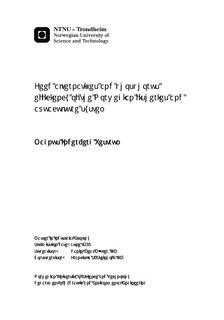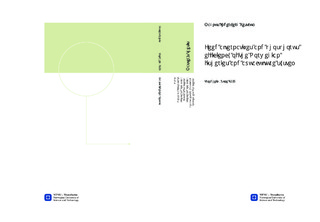| dc.contributor.advisor | Müller, Daniel Beat | nb_NO |
| dc.contributor.advisor | Steinhoff, Franciska S. | nb_NO |
| dc.contributor.author | Vestrum, Magnus Inderberg | nb_NO |
| dc.date.accessioned | 2014-12-19T11:50:54Z | |
| dc.date.available | 2014-12-19T11:50:54Z | |
| dc.date.created | 2013-09-19 | nb_NO |
| dc.date.issued | 2013 | nb_NO |
| dc.identifier | 649711 | nb_NO |
| dc.identifier | ntnudaim:8395 | nb_NO |
| dc.identifier.uri | http://hdl.handle.net/11250/235205 | |
| dc.description.abstract | With the worlds reserves of rock phosphate expected to be depleted within 50-100 years, the mapping of the flows of phosphorus in the world is crucial. The Norwegian fisheries and aquaculture industry is one of the largest industries in Norway, and is predicted to grow significantly the coming decades. This opens up to many challenges and opportunities regarding sustainability and efficient use of the available resources. In this thesis a material flow analysis (MFA) is utilized in order to investigate the current flows of P in the Norwegian fisheries and aquaculture industry with consumption and waste management.Using the total amount of landed fish (2 578 663 tons) in 2011 it was found that the total input of P from the Norwegian fisheries were found to 10 075 tons. Of this 6 757 tons were in fish sold as food products and 2 573 tons in fish and fish scrap used for fishmeal production. In addition a total of 696 tons of P from the marine fisheries were used in other industries. From the total production of farmed fish (1 142 892 tons) it was estimated that the total P content of the feed used was 15 240. Of this 5 394 tons were from import of animal feed components, and 8 121 tons were imported vegetable feed components. Of the total input to the aquaculture it was found that only 4 576 tons were retained in the farmed fish, and that 10 334 tons were lost due to sloppy feeding, excretion and faeces. As a significant amount of the P in fish is located in the bones, 1 825 tons were located in fish scrap which were used by other industries. Thus only 2 751 tons were to be found in the farmed fish sold as food products and together with marine fish the total export of P in fish was found to be 7 732 tons.According to predictions the landing of marine fish in Norway is expected to be 4 million tons in 2050, and the total production of aquaculture 5 million tons. Using these predictions it was found that this would lead to a total of 15 629 tons of P in landed catch, and 19 987 tons in produced animals from the aquaculture industry. As a consequence of the increased production in aquaculture it was found that the total emissions would be a total of 45 132 tons P.In addition a number of scenario analysis were performed in order to investigate the potential for alternative feed sources in the aquaculture industry. It was found that with a high degree of fileting of marine and farmed fish, this fish scrap could significantly reduce the dependency upon imported feed components in the aquaculture industry. | nb_NO |
| dc.language | eng | nb_NO |
| dc.publisher | Institutt for vann- og miljøteknikk | nb_NO |
| dc.title | Feed alternatives and phosphorus efficiency of the Norwegian fisheries and aquaculture system | nb_NO |
| dc.type | Master thesis | nb_NO |
| dc.source.pagenumber | 92 | nb_NO |
| dc.contributor.department | Norges teknisk-naturvitenskapelige universitet, Fakultet for ingeniørvitenskap og teknologi, Institutt for energi- og prosessteknikk | nb_NO |

